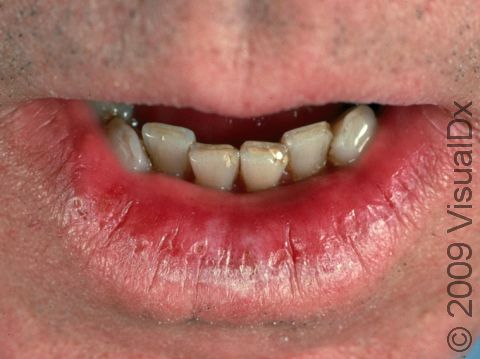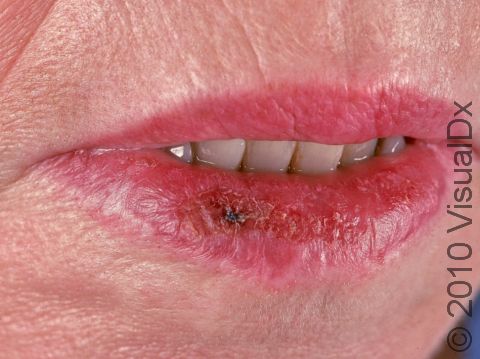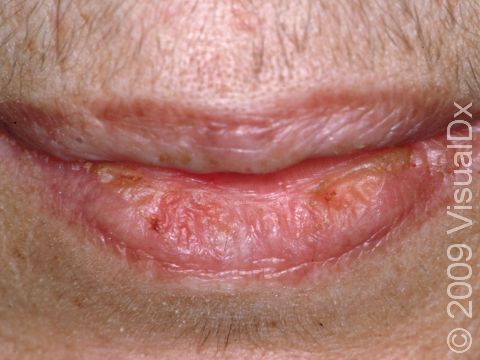Actinic Cheilitis
Actinic cheilitis, sometimes known as “farmer’s lip” or “sailor’s lip,” is a precancerous condition related to cumulative lifetime sun exposure. The lower lip is most often affected. Individuals with actinic cheilitis often complain of persistent dryness and cracking of the lips. They will frequently exhibit other effects of sun-damaged skin, such as precancerous lesions on the skin called actinic keratoses and extensive wrinkling.
A certain type of skin cancer (squamous cell carcinoma) develops in 6–10% of cases of actinic cheilitis.
Who's At Risk?
Actinic cheilitis is significantly more common in men, the elderly, and light-skinned individuals. There is also a strong association with tobacco use.
Signs & Symptoms
Actinic cheilitis is located on the lips, most often the lower lip. Persistent redness, scaliness, and chapping are among the symptoms noted. Erosions and cracks (fissures) may be present as well.
Self-Care Guidelines
Prevention is very important. Wearing barrier clothing (eg, wide-brimmed hats) and sunscreen-containing lip balms can aid in preventing actinic cheilitis.
Treatments
In severe cases without evidence of malignancy, a lip shave procedure (vermilionectomy) may be performed. In less extreme cases, your physician may recommend destruction (ablation) of the damaged cells with a carbon dioxide (CO2) laser.
Alternative treatments include the use of electric current to destroy the precancerous cells (electrodesiccation) and a facial sanding technique (dermabrasion). Topical therapy with a chemotherapeutic agent (fluorouracil) or a topical immunomodulator (imiquimod) may be prescribed.
Visit Urgency
Seek the evaluation of a primary care provider or dermatologist when persistent scaling of the lips is noted. A biopsy of the lip may be needed to rule out squamous cell carcinoma.
Trusted Links
References
Bolognia, Jean L., ed. Dermatology, pp.1090-1091. New York: Mosby, 2003.
Freedberg, Irwin M., ed. Fitzpatrick’s Dermatology in General Medicine. 6th ed, pp. 721-725, 741. New York: McGraw-Hill, 2003.
Last modified on February 10th, 2023 at 6:40 pm

Not sure what to look for?
Try our new Rash and Skin Condition Finder


